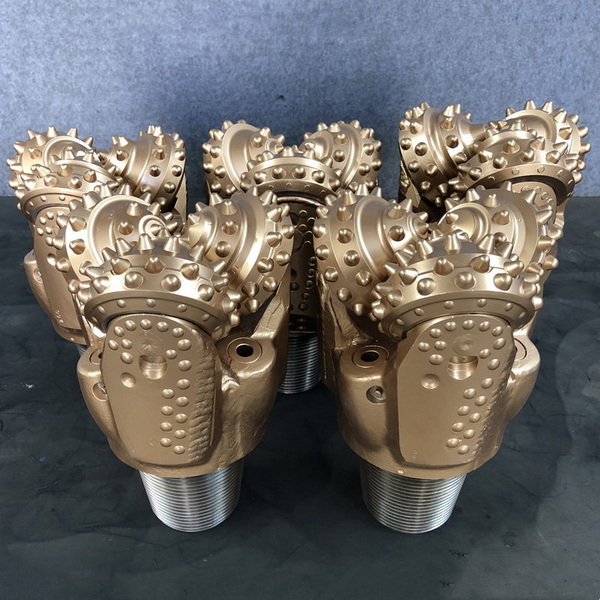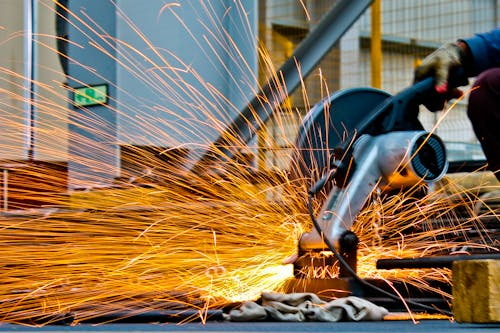Content Menu
● Introduction to Tungsten and Tungsten Carbide
>> What is Tungsten?
>> What is Tungsten Carbide?
● Composition and Structure
● Physical and Mechanical Properties
>> Hardness
>> Density
>> Melting Point
>> Thermal and Electrical Conductivity
>> Toughness and Brittleness
● Manufacturing Processes
>> Tungsten Production
>> Tungsten Carbide Production
● Applications
>> Tungsten Uses
>> Tungsten Carbide Uses
● Cost Comparison
● Environmental and Safety Considerations
● Summary Table: Tungsten vs Tungsten Carbide
● Conclusion
● Frequently Asked Questions (FAQs)
>> 1. What is the main difference between tungsten and tungsten carbide?
>> 2. Can tungsten carbide be used for electrical applications like tungsten?
>> 3. Why is tungsten carbide so much harder than tungsten?
>> 4. Is tungsten carbide more expensive than tungsten?
>> 5. Are tungsten and tungsten carbide safe to handle?
● Citations:
Tungsten and tungsten carbide are two materials often mentioned together due to their related names and shared element, tungsten. However, they differ significantly in composition, physical properties, hardness, applications, and cost. This article explores these differences in depth, providing a comprehensive understanding of each material's unique characteristics and uses.

Introduction to Tungsten and Tungsten Carbide
What is Tungsten?
Tungsten (chemical symbol W, atomic number 74) is a pure metallic element known for its exceptional density, hardness, and the highest melting point of all metals at 3,422°C (6,192°F). It is a grayish-white metal with excellent thermal and electrical conductivity and is highly resistant to corrosion and wear. Tungsten is naturally found in minerals such as wolframite and scheelite and is extracted through complex refining processes.
What is Tungsten Carbide?
Tungsten carbide (chemical formula WC) is a chemical compound formed by combining tungsten and carbon atoms in a roughly 1:1 ratio. It is a ceramic-metal composite (cermet) often mixed with a metallic binder like cobalt to enhance toughness. Tungsten carbide is renowned for its extreme hardness, ranking 9 to 9.5 on the Mohs scale, second only to diamond. It is synthesized through a powder metallurgy process and is widely used in industrial applications requiring wear resistance.
Composition and Structure
| Material | Composition | Structure |
| Tungsten | Pure element (W) | Body-centered cubic (bcc) metal |
| Tungsten Carbide | Compound of tungsten and carbon (WC), often with cobalt binder | Hexagonal crystal ceramic-metal composite |
Tungsten is a single-element metal, while tungsten carbide is a compound that includes carbon atoms bonded with tungsten, forming a very hard ceramic-like structure. The addition of carbon and binders like cobalt gives tungsten carbide its unique properties, distinct from pure tungsten.
Physical and Mechanical Properties
Hardness
- Tungsten: Hard metal with Mohs hardness of approximately 7.5 to 8, similar to hardened steel.
- Tungsten Carbide: Extremely hard, with Mohs hardness of 9 to 9.5, rivaling diamond.
This difference in hardness means tungsten carbide can cut or wear away many other materials, including tungsten itself, making it ideal for cutting tools and abrasives.
Density
- Tungsten: Very dense metal, density about 19.3 g/cm³, heavier than lead and iron.
- Tungsten Carbide: Slightly less dense than tungsten, around 15.6 to 15.7 g/cm³, but still much heavier than steel.
The high density of both materials contributes to their use in applications requiring mass in a small volume, such as counterweights and armor-piercing projectiles.
Melting Point
- Tungsten: Highest melting point of any metal at 3,422°C (6,192°F).
- Tungsten Carbide: High melting point of approximately 2,870°C (5,198°F), lower than tungsten but still very high.
The melting point difference reflects their different atomic bonding. Tungsten's metallic bonds require more energy to break than the covalent bonds in tungsten carbide.
Thermal and Electrical Conductivity
- Tungsten: Excellent thermal conductivity (~173 W/m·K) and good electrical conductivity.
- Tungsten Carbide: Good thermal conductivity (about 110 W/m·K) but lower electrical conductivity compared to tungsten.
Tungsten's superior electrical conductivity makes it valuable in electrical contacts and filaments, whereas tungsten carbide's lower conductivity limits its use in electrical applications.
Toughness and Brittleness
- Tungsten: More ductile and less brittle, better impact resistance.
- Tungsten Carbide: Very hard but brittle, prone to chipping or fracturing under heavy impact.
This brittleness requires tungsten carbide tools to be used carefully, often with support or in composite forms to prevent breakage.

Manufacturing Processes
Tungsten Production
Tungsten is extracted from ores such as wolframite and scheelite through a series of chemical processes involving roasting, leaching, and reduction. The purified tungsten powder is then consolidated by sintering or melted and cast into shapes. Due to its high melting point, tungsten is often processed by powder metallurgy rather than melting.
Tungsten Carbide Production
Tungsten carbide is produced by combining tungsten powder with carbon black and heating the mixture in a hydrogen atmosphere at 1,400–1,600°C. This process, called carburization, forms the WC compound. The powder is then mixed with a cobalt binder and sintered under high pressure and temperature to produce dense, hard parts.
Applications
Tungsten Uses
- Electrical Filaments: Tungsten's high melting point and electrical conductivity make it ideal for incandescent light bulb filaments and heating elements.
- Alloys: Added to steel and other metals to improve hardness and heat resistance in cutting tools and aerospace components.
- Radiation Shielding: Used in medical and industrial X-ray shielding due to its density and non-toxicity compared to lead.
- Weights and Counterbalances: Used in applications requiring dense, compact weights such as in racing cars, aircraft, and ballast.
Tungsten Carbide Uses
- Cutting Tools: Widely used in drill bits, milling cutters, and saw blades for metalworking, mining, and construction due to extreme hardness and wear resistance.
- Wear-Resistant Parts: Components like nozzles, bearings, and wear plates in industrial machinery.
- Jewelry: Used in rings and watches for scratch resistance and durability.
- Military Applications: Armor-piercing ammunition and penetrators due to hardness and density.
- Surgical Instruments: Precision cutting tools and scalpels.
Cost Comparison
Tungsten metal is generally less expensive than tungsten carbide, primarily because tungsten carbide requires additional processing steps and cobalt binders. The price of tungsten carbide fluctuates with cobalt prices and demand for industrial tools. Despite the higher cost, tungsten carbide's superior hardness and wear resistance justify its use in demanding applications.
Environmental and Safety Considerations
- Tungsten: Generally considered safe and non-toxic, though tungsten dust can be hazardous if inhaled in large quantities.
- Tungsten Carbide: Cobalt binders used in tungsten carbide can cause allergic reactions or health issues if improperly handled. Proper safety protocols are essential during manufacturing and machining.
Summary Table: Tungsten vs Tungsten Carbide
| Property | Tungsten | Tungsten Carbide |
| Composition | Pure metal (W) | Compound (WC) + cobalt binder |
| Hardness (Mohs) | 7.5 – 8 | 9 – 9.5 |
| Density (g/cm³) | 19.3 | 15.6 – 15.7 |
| Melting Point (°C) | 3,422 | ~2,870 |
| Electrical Conductivity | High | Moderate to low |
| Toughness | High (ductile) | Low (brittle) |
| Typical Uses | Filaments, alloys, weights | Cutting tools, wear parts, jewelry |
| Cost | Lower | Higher |
Conclusion
In conclusion, tungsten and tungsten carbide, while related by the element tungsten, serve very different purposes due to their distinct physical and chemical properties. Tungsten is a dense, ductile metal with the highest melting point of all metals, making it ideal for high-temperature and electrical applications. Tungsten carbide, on the other hand, is a compound known for its exceptional hardness and wear resistance, making it indispensable in cutting tools and industrial machinery.
Choosing between tungsten and tungsten carbide depends on the specific requirements of hardness, toughness, thermal stability, and cost. Understanding these differences allows engineers, manufacturers, and consumers to select the right material for their needs, optimizing performance and durability.

Frequently Asked Questions (FAQs)
1. What is the main difference between tungsten and tungsten carbide?
The main difference is that tungsten is a pure metallic element, while tungsten carbide is a compound formed by tungsten and carbon atoms, often mixed with cobalt. Tungsten carbide is much harder and more wear-resistant but also more brittle than tungsten.
2. Can tungsten carbide be used for electrical applications like tungsten?
No, tungsten carbide has lower electrical conductivity compared to pure tungsten and is generally not used in electrical applications. Tungsten's excellent conductivity makes it suitable for filaments and contacts.
3. Why is tungsten carbide so much harder than tungsten?
Tungsten carbide's hardness comes from its ceramic-like crystal structure formed by strong covalent bonds between tungsten and carbon atoms, whereas tungsten's metallic bonds are less rigid, making it softer.
4. Is tungsten carbide more expensive than tungsten?
Yes, tungsten carbide is generally more expensive due to its complex manufacturing process and the addition of cobalt binders. However, its superior hardness and durability justify the cost in many industrial applications.
5. Are tungsten and tungsten carbide safe to handle?
Tungsten is generally safe, but tungsten dust can be harmful if inhaled. Tungsten carbide contains cobalt, which can cause allergic reactions or health issues if not handled properly. Safety precautions are necessary during manufacturing and machining.
Citations:
[1] https://konecarbide.com/tungsten-vs-tungsten-carbide-differences-explained/
[2] https://www.linkedin.com/pulse/tungsten-vs-carbide-whats-difference-haijun-liu
[3] https://en.wikipedia.org/wiki/Tungsten_carbide
[4] https://mirror-polish.com/en/material_knowledge/tungsten/
[5] https://carbideprocessors.com/pages/carbide-parts/tungsten-carbide-properties.html
[6] https://www.istockphoto.com/photos/tungsten-metal
[7] https://create.vista.com/photos/tungsten-carbide/
[8] https://www.mdpi.com/2075-4701/11/12/2035
[9] https://en.wikipedia.org/wiki/Tungsten
[10] https://cncpartsxtj.com/cnc-materials/difference-tungsten-and-tungsten-carbide/
[11] https://www.retopz.com/57-frequently-asked-questions-faqs-about-tungsten-carbide/
[12] https://www.tungstensupply.com/faq.html
[13] https://cowseal.com/tungsten-vs-tungsten-carbide/
[14] https://shop.machinemfg.com/tungsten-vs-tungsten-carbide-key-differences/
[15] https://www.istockphoto.com/photos/tungsten-image
[16] https://www.thermalspray.com/questions-tungsten-carbide/
[17] https://www.linde-amt.com/resource-library/articles/tungsten-carbide
[18] https://www.xometry.com/resources/materials/tungsten-metal/
[19] https://www.gettyimages.com/photos/tungsten-metal
[20] https://periodictable.com/Elements/074/pictures.html
[21] https://va-tungsten.co.za/pure-tungsten-vs-tungsten-carbide-whats-the-difference/
[22] https://www.tungstenworld.com/pages/tungsten-vs-tungsten-carbide
[23] https://www.vanswedenjewelers.com/blogs/education-ideas/tungsten-vs-tungsten-carbide-wedding-bands
[24] https://www.linde-amt.com/resource-library/articles/tungsten-carbide
[25] https://en.wikipedia.org/wiki/Tungsten
[26] https://www.refractorymetal.org/tungsten-carbide-uses-properties.html
[27] https://www.iqsdirectory.com/articles/tungsten/tungsten-metal.html
[28] https://stock.adobe.com/search?k=tungsten
[29] https://www.shutterstock.com/search/tungsten
[30] https://www.gettyimages.hk/%E5%9C%96%E7%89%87/tungsten-carbide?page=2
[31] https://www.linkedin.com/pulse/tungsten-vs-carbide-whats-difference-haijun-liu
[32] https://www.diva-portal.org/smash/get/diva2:1237216/FULLTEXT01.pdf
[33] https://www.istockphoto.com/photos/tungsten-carbide-drill-bits
[34] https://cowseal.com/tungsten-vs-tungsten-carbide/
[35] https://www.istockphoto.com/photos/tungsten-carbide
[36] https://www.aemmetal.com/news/tungsten-vs-tungsten-carbide-guide.html
[37] https://www.embr.com/blogs/news/what-does-tungsten-vs-tungsten-carbide-really-mean
[38] https://www.tungco.com/insights/blog/frequently-asked-questions-used-tungsten-carbide-inserts/
[39] https://eternaltools.com/blogs/tutorials/tungsten-carbide-an-informative-guide
[40] https://shop.machinemfg.com/the-pros-and-cons-of-tungsten-carbide-a-comprehensive-guide/
















